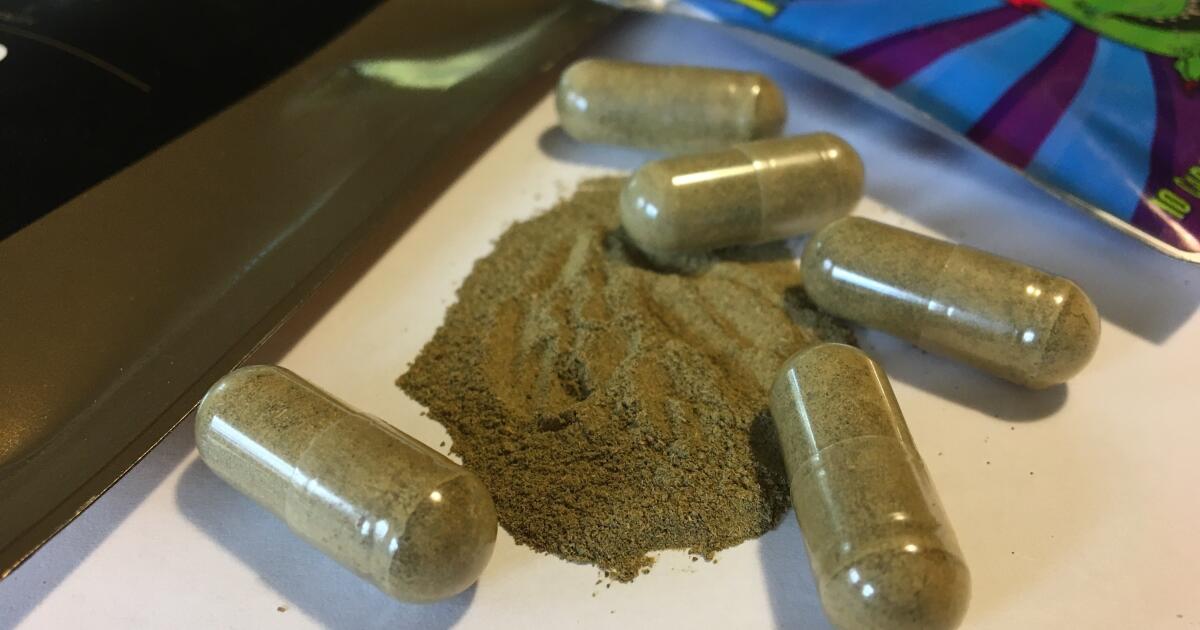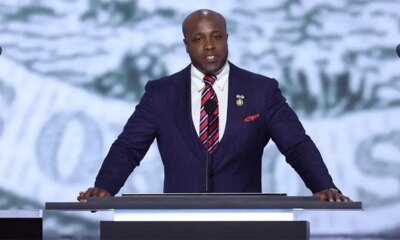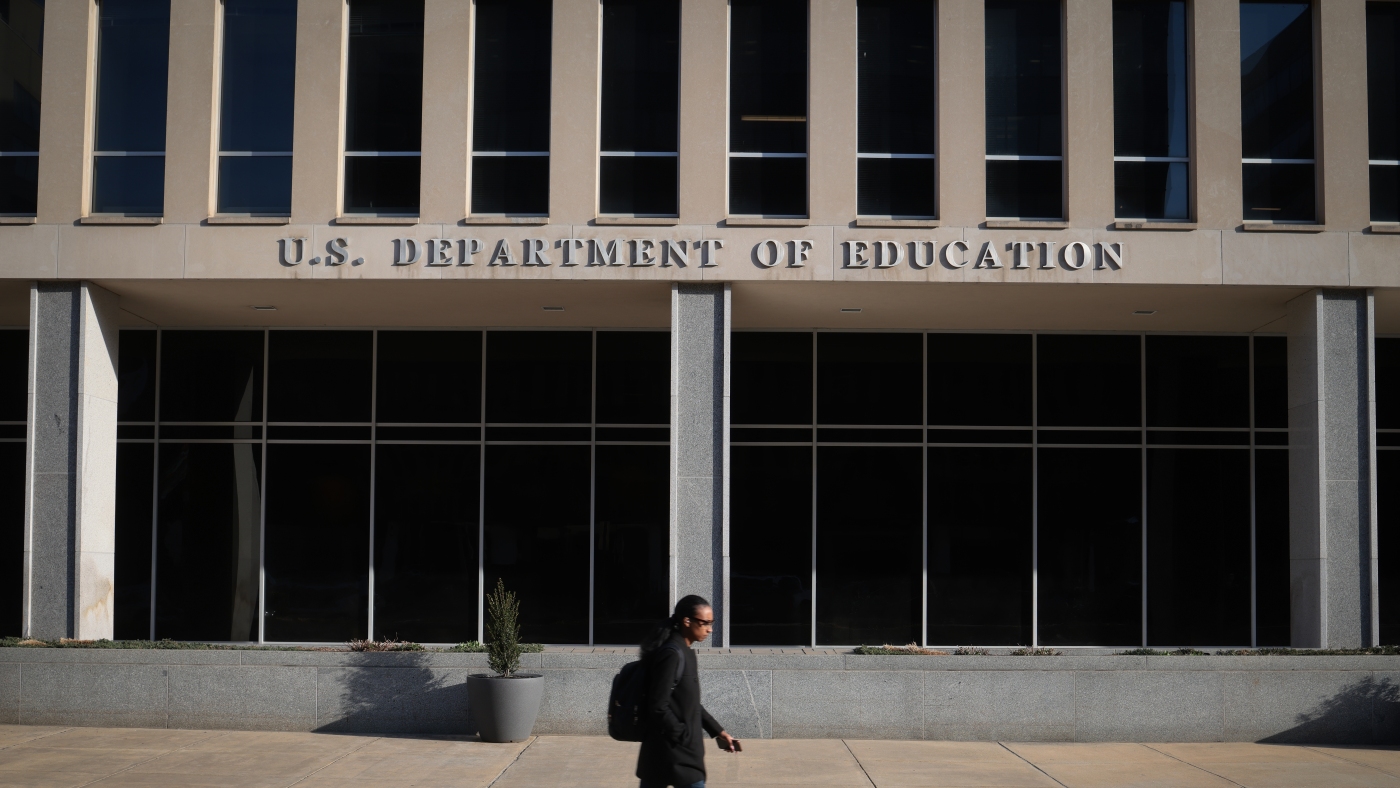Science
The Territory Is Tiny and So Is the Newborn Caterpillar Defending It

When territorial animals are confronted by intruders, they instinctively protect their turf — no matter how small.
For warty birch caterpillars, that means patrolling one of the tiniest territories on Earth: the tips of birch leaves. Scientists observed the caterpillars warding off intruders with loud vibrations that advertise they are in command of a domain that stretches a few millimeters across.
“It’s like rap battles,” said Jayne Yack, a professor of neuroethology at Carleton University in Ottawa and an author of the study, which was published on Tuesday in The Journal of Experimental Biology.
Dr. Yack’s team is the first to observe an insect defending a leaf tip, a discovery that hints at a hidden world of territorial disputes playing out on small scales. These caterpillars are kings of the tiniest castles ever identified.
The behavior of warty birch caterpillars is unconventional. These insects seek turf as soon as they hatch, settling on leaf tips in a “dragon-like” resting stance. While other caterpillar species defend ranges at later developmental stages, they are not as vulnerable to predators and exposure as the warty birches.
“The remarkable thing about these guys is that they’re so small when they hatch, less than a millimeter,” Dr. Yack said. “The mortality rate for a small insect like that is very high, so usually they form groups to survive in that hostile world. But these guys always go to the tip of a leaf. That’s their strategy.”
Dr. Yack and her team collected eggs laid by two-lined hooktip moths, the adult form of the species, and set up new hatchlings on single birch leaves. The newborns overwhelmingly booked it to the tips.
After staking claims, the caterpillars made vibrational signals, called drums and buzz scrapes, produced by striking and scraping their bodies against the leaf. The vibrations are like a “no vacancy” sign that rumbles across nearby stems and branches.
Rival warty birch caterpillars were introduced onto occupied leaves over the course of 18 trial encounters. When confronted by intruders, the resident caterpillars dialed up the signal rate by about four times. If the intruder breached the perimeter of the leaf tip, the defenders escalated the signal rate by about 14 times.
Newborn caterpillars are too fragile to endure the sort of violent conflicts observed in other territorial animals, from ants to elephants, which can be deadly. But intruders did make body contact in eight of the trials. And such encounters highlighted why the tiny tyrants want to live on a leaf tip: It allows an easy getaway. Faced with insistent invaders they’d never defeat, the caterpillars can rappel off the tip on a silk thread, a strategy called lifelining.
It took only a light touch to drive a leaf tip’s resident to retreat on its lifeline, leaving the caterpillar literally hanging by a thread. In the other 10 encounters, the intruders heeded the warnings and left the resident in control.
Dr. Yack and her colleagues have since conducted experiments that suggest caterpillars can distinguish signals from different sources. They might even imitate vibrations made by predators, like spiders.
“The vibroscape of insects is really unexplored,” Dr. Yack said.
The new research opens a window into caterpillar communication. But along with evidence suggesting some wasps or aphids defend territory as small as the tip of a birch leaf, the study also shows that territorial conflicts come in all shapes and sizes.
“Territorial behavior is really important to animals, including humans, and there are a lot more strategies out there than we think,” Dr. Yack said.

Science
L.A. County stores must immediately stop selling kratom and 7-OH, health department warns

Los Angeles County officials are set to pull kratom and its synthetic extract, sometimes called 7-OH, from shelves immediately.
Inspectors will be sent to retailers next week to begin red-tagging illegal products containing the compounds, the L.A. County Department of Public Health said in a news release Friday morning. Shops that don’t comply could be hit with fines or other penalties.
Kratom is an herbal extract from the leaves of Mitragyna speciosa, a tree native to Southeast Asia. It is sold in shops and online in a variety of forms, including powders, pills and liquid extracts. Brands selling kratom often make claims that it can address pain, anxiety and mood disorders.
Matthew Lowe, executive director of the Global Kratom Coalition, said natural kratom has been used in the U.S. for more than 50 years and according to a 2020 Johns Hopkins Survey, people have been using it to alleviate anxiety and treat chronic pain.
In the last few years, a more potent, synthetic version of kratom refined into its psychoactive compound 7-Hydroxymitragynine, or 7-OH, hit shelves across the U.S.
7-OH products are often marketed as “plant alkaloids,” drawing criticism from some, including Lowe, who argue the labeling is misleading, confusing consumers into thinking it’s the same as natural kratom.
When mixed with alcohol, medications or illicit drugs, the county health department warns, 7-OH products can “cause severe respiratory depression and death. Importantly, these products are unregulated and may contain unknown concentrations of 7-OH, increasing the risk of unintentional overdose.”
There have been six reported kratom-related deaths in Los Angeles County in just the past few months.
“Given that this is new and emerging substance, this is also since the medical examiner started tracking 7-OH data,” the Los Angeles County Department of Public Health told The Times via email. Since the county began tracking 7-OH in deaths only in April of this year, it is unclear how many other overdoses could have occurred previously.
After publication of this article, the county medical examiner released the death reports to The Times. Each of the deceased had kratom and 7-OH in their bodies, according to the reports, but it was not immediately clear what role they played in the deaths, as compared with other substances — including alcohol, prescription sedatives and muscle relaxants, and illicit drugs like cocaine — that were also found in the six bodies. The Times first requested the coroner’s report for the kratom-related deaths on Oct. 24.
“Kratom and 7-OH products are sold as natural remedies, but they are illegal and unsafe,” Dr. Muntu Davis, the county health officer said in the release. “They are sold in gas stations, smoke shops, online, and other retailers. People should avoid using these products, and store owners/operators must remove them immediately to prevent harm.”
Right now, consumers have no clarity on kratom, 7-OH or any other metabolites, said Yaël Ossowski, deputy director of Consumer Choice Center, a nonprofit consumer advocacy group.
“At any gas station or smoke shop, there’s the powder, the liquid extracts, and pills all offered at different doses, with different brands,” Ossowski said. “This obviously leads to consumer confusion and uninformed choices, incorrect dosing and likely bad experiences that smart regulation would avoid.”
The kratom and 7-OH market has grown largely because people want targeted pain relief and remedies for their ailments, “but don’t necessarily want to have the full effects of more powerful opioids that have a fuller effect on the body,” he said.
“Kratom has been successfully used for generations in other countries as an opioid alternative,” Ossowski said. But highly concentrated 7-OH products are a different beast altogether.
According to the U.S. Food and Drug Administration, kratom and 7-OH are not lawfully marketed in the U.S. as a drug product, a dietary supplement or an approved food additive.
California adopts federal law concerning food and dietary supplements, the California Department of Public Health told The Times via email.
“Until kratom and its pharmacologically active key ingredients mitragynine and 7-OH are approved for use, they will remain classified as adulterants in drugs, dietary supplements and foods,” a department spokesperson said.
The spokesperson added that the department has been conducting investigative work associated with kratom for the last two years and “continues to take appropriate action to protect the public against adulterated products containing kratom or 7-OH.”
“CDPH embargoes or destroys foods and dietary supplements within the state that are adulterated with kratom or 7-OH once they are identified during investigations; however, we do not comment on the specifics of ongoing investigations,” the spokesperson said.
7-OH producers have publicly defended their products in the face of lawsuits and FDA crackdowns, arguing it is a safer alternative to illicit opioids like fentanyl and has saved lives, not taken them.
Vince Sanders, founder and CEO of CBD American Shaman who helped develop an early 7-OH product, has said the attack on 7-OH is being led by companies selling natural kratom, who have had their market share overtaken by what he says is “a vastly superior product.”
The Kansas City businessman said a ban anywhere in the country would hurt people who have used 7-OH to treat substance abuse disorders or chronic pain and now rely on the product as an alternative to costly prescription medication.
“People that have changed their life using it are extremely concerned,” Sanders said. “They’re scared to death. I mean, there are people that … plan to pull money out of their 401K, or load up their credit cards, or whatever they’ve got to do to buy years and years of supply.”
He acknowledged that both kratom and 7-OH are frequently taken in higher doses than he recommends, but argued manufacturers and retailers should not be held accountable for those decisions. He compared it to alcohol: “You buy a 750-milliliter bottle, and if you go home and drink that entire bottle, and you do that every single night, is that your fault, or is that Jim Beams’ fault?”
Communities across the state have taken it upon themselves to act in the absence of state and federal regulation. Orange County and the cities of Newport Beach, San Diego and Oceanside have all prohibited the sale, distribution or possession of kratom. Riverside County is looking to deter the sale and marketing of kratom and 7-OH products to people under the age of 21.
Los Angeles County does not have its own regulatory ordinance for the products.
“I think that the local action is signaling intent. It’s saying to the state and [federal authorities], you need to do something about this,” Lowe said in regard to synthetic 7-OH.
But outright prohibition bans that include natural kratom could bring another host of issues including whether local enforcement of the ban will even happen, and the possibility that a black market for the products may arise, he said.
“You leave people without any options, so they either find alternative options or they just drive across city lines or county lines and and go get it themselves,” Lowe said. Indeed, kratom and 7-OH are widely available on online marketplaces.
Science
L.A. air officials approve port pollution pact as skeptics warn of ‘no clear accountability’

Southern California air officials voted overwhelmingly Friday to give themselves the power to levy fines on the ports of Los Angeles and Long Beach if they don’t fulfill their promises to transition to cleaner equipment.
The ports remain the largest source of smog-forming pollution in Southern California — releasing more emissions than the region’s 6 million cars each day.
The South Coast Air Quality Management District’s governing board voted 9-1 in favor of an agreement that commits the ports to installing zero-emission equipment, such as electric truck chargers or hydrogen fuel pumps, to curb air pollution from the heaviest polluters. The plans will be submitted in three phases: heavy-duty trucks and most cargo-moving equipment by 2028; smaller locomotives and harbor crafts by 2029; and cargo ships and other large vessels by 2030.
If the ports don’t meet their deadlines, they would be fined $50,000 to $200,000, which would go into a clean-air fund to aid communities affected by port pollution. The AQMD, for its part, forgoes imposing new rules on the ports for five years.
Many environmental advocates voiced disappointment, saying the agreement doesn’t contain specific pollution reduction requirements.
“I urge you not to sign away the opportunity to do more to help address the region’s air pollution crisis in exchange for a pinky promise,” said Kathy Ramirez, one of dozens of speakers at Friday’s board meeting. “This is about our lives. I would encourage you to think about why you joined the AQMD board. If not for clean air, then for what?”
Port officials and shipping industry officials lauded the decision as a pragmatic way to transition to a zero-emissions economy.
“The give and take of ideas and compromises in this process — it mirrors exactly what a real-world transition to zero emissions looks like,” said William Bartelson, an executive at the Pacific Maritime Assn. “It’s practical, it’s inclusive and it’s grounded in shared goals.”
The vote answers a long-standing question over how the AQMD intends to reduce pollution from the sprawling trade complex, a focus of environmental justice efforts for decades.
The twin ports of Los Angeles and Long Beach, known as the San Pedro Port Complex, is the largest container port in the Western Hemisphere, handling 40% of all container cargo entering the United States. Despite years of efforts at reducing pollution, the vast majority of heavy machinery, big rigs, trains and ships that serve the region’s bustling goods movement still are powered by diesel engines that emit toxic particles and nitrogen oxides, a precursor to smog.
For nearly a decade the AQMD has vacillated between strict regulation and a pact with the ports with more flexibility. Several negotiations over a memorandum of understanding failed between 2017 and 2022. The board was prepared to require the ports to offset smog-forming pollution from trucks, trains and ships through clean air projects, like solar panels or electric vehicle chargers. Instead, the ports presented the AQMD with a proposed cooperative agreement, prompting the agency to pause its rulemaking.
The AQMD doubled the penalties in that proposal and agreed not to make new rules for five years, not the 10 the industry wanted.
Perhaps the most important details of the agreement — the types of energy or fuel used; the appropriate number of chargers or fueling stations — won’t be published for years. The lack of specifics prompted skepticism from many environmental advocates.
“It’s just a stall tactic to make a plan for a plan in the hope that emission reductions will come sometime in the future,” said Fernando Gaytan, a senior attorney with environmental nonprofit Earthjustice.
The contract also includes a clause that the AQMD or ports could terminate the agreement “for any reason” with a 45-day written notice. Wayne Nastri, the AQMD’s executive officer, said this gives the agency the option to switch back to requiring zero-emission infrastructure at the ports.
“If we report back to you and you’re not seeing the progress being made, you can be confident knowing that you can pivot and release that [rulemaking] package,” Nastri said to the board.
At the end of public comment, opponents of the agreement broke into loud chants. The AQMD cleared the gallery as the board discussed the proposal.
Board member Veronica Padilla-Campos, the lone “no” vote, said the agreement lacked the necessary emission reductions and offered “no clear accountability” to local communities.
Fellow board member Nithya Raman acknowledged many criticisms of the agreement but ultimately voted for it.
“I really have come to believe that the choice before us is this cooperative agreement or no action at all on this issue — continuing a decade of inaction,” Raman said.
“I will be voting to support it today, because I do think that it is our only pathway to take any steps forward toward cleaner air at the single largest source of air pollution in the region.”
The plan still must be approved by commissioners at the Port of Los Angeles and the Port of Long Beach Harbor Commission at meetings this year.
Science
Video: Scientists Discover Colossal, Stinking Spider Web in Pitch-Black Cave

new video loaded: Scientists Discover Colossal, Stinking Spider Web in Pitch-Black Cave

By Jamie Leventhal and Axel Boada
November 7, 2025
-

 Austin, TX4 days ago
Austin, TX4 days agoHalf-naked woman was allegedly tortured and chained in Texas backyard for months by five ‘friends’ who didn’t ‘like her anymore’
-

 Seattle, WA1 week ago
Seattle, WA1 week agoESPN scoop adds another intriguing name to Seahawks chatter before NFL trade deadline
-

 Southwest2 days ago
Southwest2 days agoTexas launches effort to install TPUSA in every high school and college
-

 Business1 week ago
Business1 week agoCommentary: Meme stocks are still with us, offering new temptations for novice and unwary investors
-

 World4 days ago
World4 days agoIsrael’s focus on political drama rather than Palestinian rape victim
-

 Southwest5 days ago
Southwest5 days agoArmy veteran-turned-MAGA rising star jumps into fiery GOP Senate primary as polls tighten
-

 Lifestyle1 week ago
Lifestyle1 week agoDuane Roberts, Inventor of the Frozen Burrito, Dead at 88
-

 News1 week ago
News1 week agoVideo: Mamdani Leads in Latest Polls






















